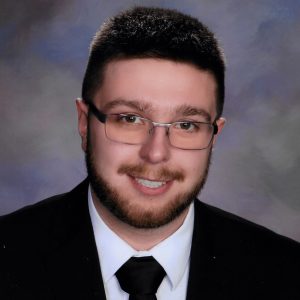Liberal Arts in Action: Jason Czerwinski ’17 (Geography)
The “Liberal Arts in Action” series allows alumni to speak, in their own words, about the value of a liberal arts education. Jason Czerwinski ’17 (Geography) is a member of the Town of Monroe Planning Board.
—
 In my current role as Town of Monroe Planning Board member, we are charged with reviewing proposed real estate developments with respect to town policy, code, and our comprehensive plan. Part of that requires looking at something called an Environmental Assessment (EA) or Environmental Impact Statement (EIS), which is a comprehensive study of the effects of a development: sewer, water, traffic, animal populations, etc. My planning classes at SUNY New Paltz exposed me to the relevant state and federal laws and the role of a town’s planning board. I have also learned how to analyze a full-length comprehensive plan and summarize it into a shorter briefing document and presentation.
In my current role as Town of Monroe Planning Board member, we are charged with reviewing proposed real estate developments with respect to town policy, code, and our comprehensive plan. Part of that requires looking at something called an Environmental Assessment (EA) or Environmental Impact Statement (EIS), which is a comprehensive study of the effects of a development: sewer, water, traffic, animal populations, etc. My planning classes at SUNY New Paltz exposed me to the relevant state and federal laws and the role of a town’s planning board. I have also learned how to analyze a full-length comprehensive plan and summarize it into a shorter briefing document and presentation.
The next thing we examine with any large proposed development is its site plan. The three Geographic Information Systems (GIS) classes in SUNY New Paltz’s Geography Department are a great way to be introduced to how they are created and mapped. What I learned from those classes is how to locate land in SBL (Section/Block/Lot) format without having to rely on a land records book (which is usually old and dusty and not entirely up to date, unlike its electronic counterpart). SBL format is very common when buying a house or paying your property taxes and in locating vacant land, which is something fairly common for a developer.
All said and done, I took five highly relevant classes: two in planning and three in GIS software. I have also made guest presentations in those classes, detailing the research work I performed and internship opportunities (such as mine in Summer 2017 with the Orange County Planning Department).
A liberal arts education benefited me by exposing me to ways of thinking that I might not have explored if left to my own devices. For instance, in my role with Monroe, I frequently draw on concepts I learned in diverse courses such as “Geography of Soils,” “Introduction to Human Services,” and “Macroeconomics.” As a general rule, I have found that the most valuable parts of my education at SUNY New Paltz are broader than how relevant a specific class is to my interests, and instead I had the opportunity to develop skills such as how to formulate challenges and solutions. In my experience, my liberal arts education prepared me for problem solving, which aligns with what employers are seeking.
—
To read more alumni profiles, visit the Liberal Arts in Action website.
